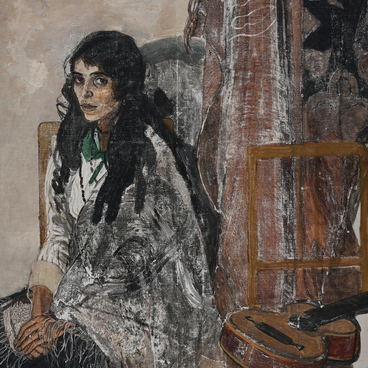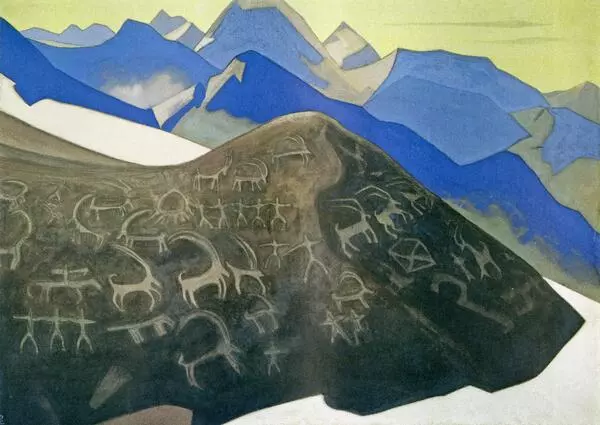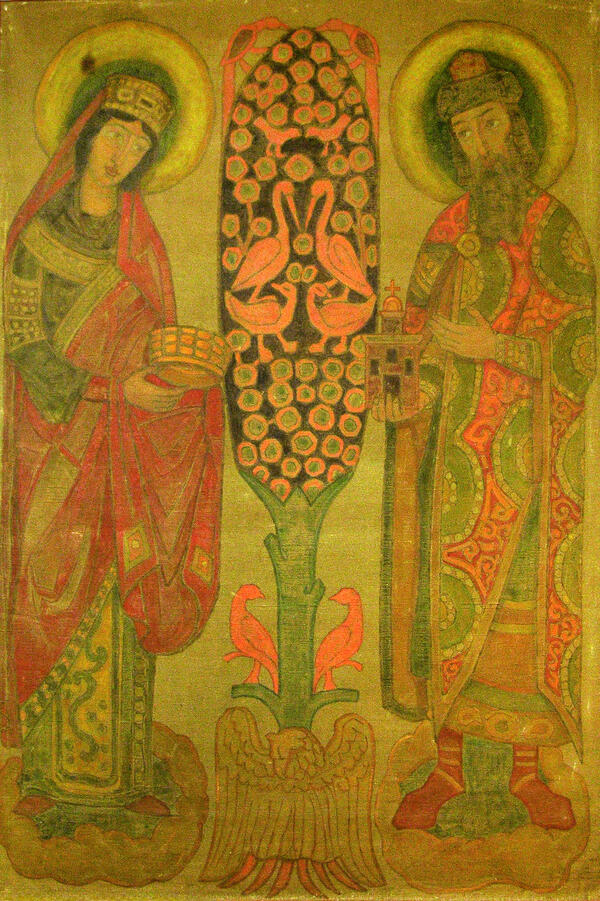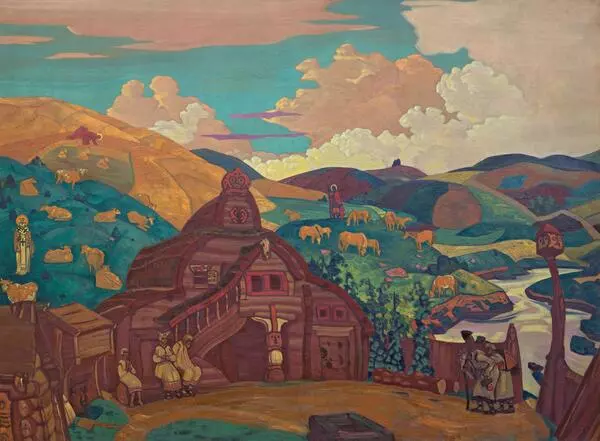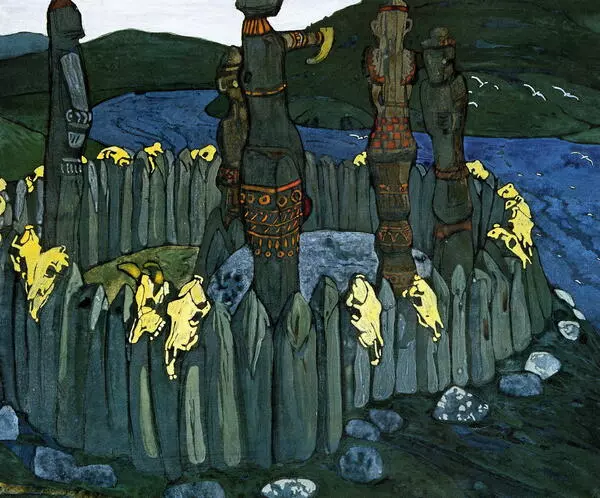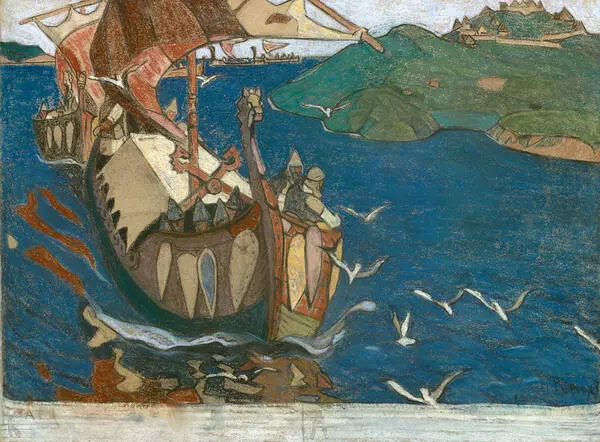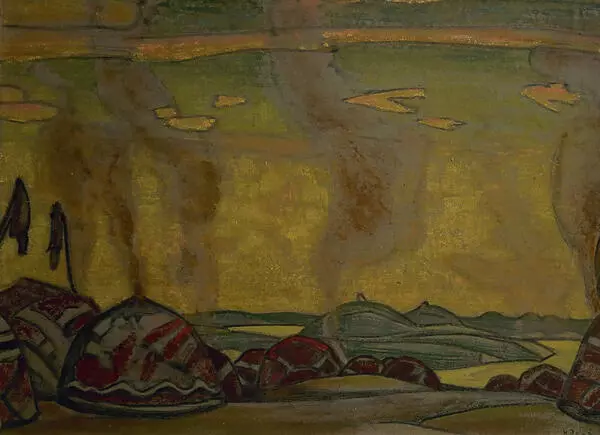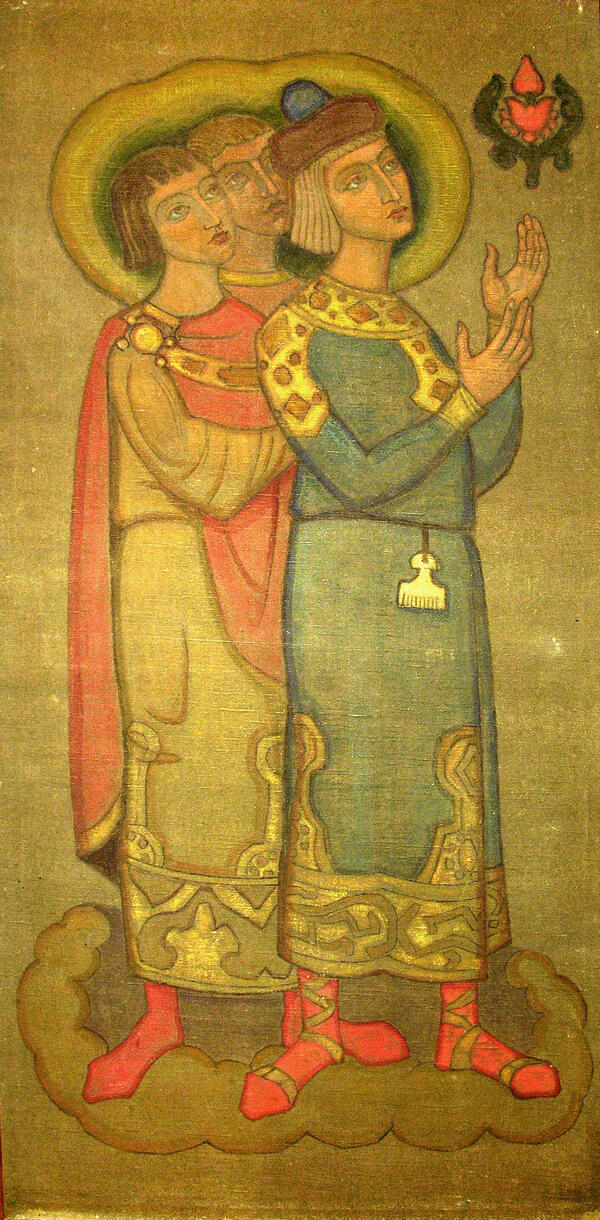In his work, NIcholas Roerich /ˈrɛrɪk/ often turned to stories of heroes and ascetics, characters of myths and legends. The artist also paid much attention to female figures. Roerich’s art has a very strong female aspect to it since he believed that it was the woman who could be the intermediary between old and new cultural traditions.
Since adolescence, the artist took interest in the ancient Russian culture and created many Slavic-themed artworks. There are multiple versions of “NastAsia MikUlichna”. Roerich depicted his heroine, inspired by the character from a bylina - an epic poem - an unstoppable and invincible woman warrior. Nastasia Mikulichna is portrayed as if she were a pagan goddess. She is depicted against the background of blazing light. This detail refers to the historical circumstances at the point when the painting was created, namely during World War Two.
Roerich’s painting style is notable for its laconic shapes and colors, but all of his works are charged with vibrant emotions. Here the alarming coloring with the prevalence of yellow and red hues helps the artist achieve the highest level of expressiveness in his work. For Roerich, raging fire symbolizes death and destruction. At the same time, the painting gives hope that all the grief and destitutions will be overcome.
The artist believed in the strength and courage of his country. This belief is reflected in the solid figure of the horsewoman. She embodies physical might. To prove it the female warrior bears no weapons — she is strong because she preserves the ties with her historical roots and homeland.
The painting is exhibited permanently in the Novosibirsk State Art Museum in a special hall dedicated to Nicholas Roerich. The museum obtained his artworks in 1960. They come from the artist’s collection that his son Yuri had brought home. The collection includes a total of 60 works created in the last decade of the master’s life. All of them are strongly associated with the plot motifs that the artist was developing in different periods of his work.
Since adolescence, the artist took interest in the ancient Russian culture and created many Slavic-themed artworks. There are multiple versions of “NastAsia MikUlichna”. Roerich depicted his heroine, inspired by the character from a bylina - an epic poem - an unstoppable and invincible woman warrior. Nastasia Mikulichna is portrayed as if she were a pagan goddess. She is depicted against the background of blazing light. This detail refers to the historical circumstances at the point when the painting was created, namely during World War Two.
Roerich’s painting style is notable for its laconic shapes and colors, but all of his works are charged with vibrant emotions. Here the alarming coloring with the prevalence of yellow and red hues helps the artist achieve the highest level of expressiveness in his work. For Roerich, raging fire symbolizes death and destruction. At the same time, the painting gives hope that all the grief and destitutions will be overcome.
The artist believed in the strength and courage of his country. This belief is reflected in the solid figure of the horsewoman. She embodies physical might. To prove it the female warrior bears no weapons — she is strong because she preserves the ties with her historical roots and homeland.
The painting is exhibited permanently in the Novosibirsk State Art Museum in a special hall dedicated to Nicholas Roerich. The museum obtained his artworks in 1960. They come from the artist’s collection that his son Yuri had brought home. The collection includes a total of 60 works created in the last decade of the master’s life. All of them are strongly associated with the plot motifs that the artist was developing in different periods of his work.

